Hey there! This post may contain affiliate links. As an Amazon Associate, I earn a teensy commission from qualifying purchases when you buy through these links (at no additional cost to you). For more info, please check the full disclaimer.
What are the early signs of diabetes in women and why do you need to watch out for them?
Long-term untreated diabetes can cause serious complications like heart disease, kidney failure, and cancer, increasing the death risk by 50%! Learning to recognize the first symptoms of diabetes can prevent you from these problems.
In this blog post, I’ve covered various early symptoms of diabetes in young females and women over 40.
What is Diabetes?
Before learning about the warning symptoms of high blood sugar, you should know what diabetes is and how can it affect your health.
Insulin is a hormone responsible for absorbing sugar from blood and delivering it to cells to generate energy. The pancreas releases insulin into the body.
However, if your body stops optimal production or function of insulin, you might notice symptoms of too high blood sugar, which ultimately leads to diabetes type 1 or type 2.
In other words, diabetes is an endocrinological (hormone) disease. Type 1 diabetics are naturally unable to produce insulin while Type 2 diabetics are insulin-resistant.
Excess blood sugar may display early signs of diabetes in women several months before. Detecting them on time can help you start the treatment right away and prevent yourself from other health risks.
Read More: Everything You Need to Know About Diabetes in Women
How Long Can You Be Diabetic Without Knowing?
A lot of women often miss diabetes as the disease does not show any major signs for years. Also, most of the early symptoms of diabetes in females are often mistaken as common health issues and could easily be dismissed.
But internally, high blood sugar continues deteriorating the organs and causes long-term diseases later on.
So it’s important for you to know about elevated sugar signs that need your immediate attention.
What Are The Long-Term Health Effects of Diabetes?
If you don’t recognize the first warning symptoms of very high blood sugar, the glucose levels will remain unmanaged for a long time. Consequently, you might develop serious health risks.
Studies show that untreated diabetes even contributes to early death in women!
For example, let’s talk about diabetes in pregnancy or gestational diabetes. It’s quite harmful to your baby’s wellbeing.
Gestational diabetes leads to premature delivery, hypoglycemia or hyperglycemia, C-section, and stillbirth. In some cases, pregnancy diabetes may cause birth deformities.
Thus, knowing the dangerous symptoms of gestational diabetes can prevent these pregnancy complications.
Read More: Scary Symptoms of Gestational Diabetes
Additionally, long-term diabetes leads to the following health risks in women:
- Coronary heart disease
- Kidney diseases
- Bone diseases such as osteoporosis
- Insomnia
- Sexual dysfunction
- Suppressed immune system
- Breast cancer
- Skin problems
If you notice any of the above symptoms of high blood sugar, the first thing you should do is visit a healthcare professional.
They’ll probably ask you to go for a diabetes diagnosis blood test to determine which type of diabetes you have OR how dangerous it is.
Let’s get to the warning signs of high glucose so you can start proper treatment right away.
Read More: How to Prepare for Your Diabetes Diagnosis Test
Early Signs of Diabetes in Women
The first thing you should know is that the early symptoms of high blood sugar type 1 generally appear during childhood or teens. In other words, you’re born with this autoimmune condition.
On the other hand, diabetes type 2 symptoms could develop over the years as you age. Since it’s caused by lifestyle changes, they are a lot more difficult to diagnose.
Let’s go over the first warning symptoms of high blood sugar that you need to look out for:
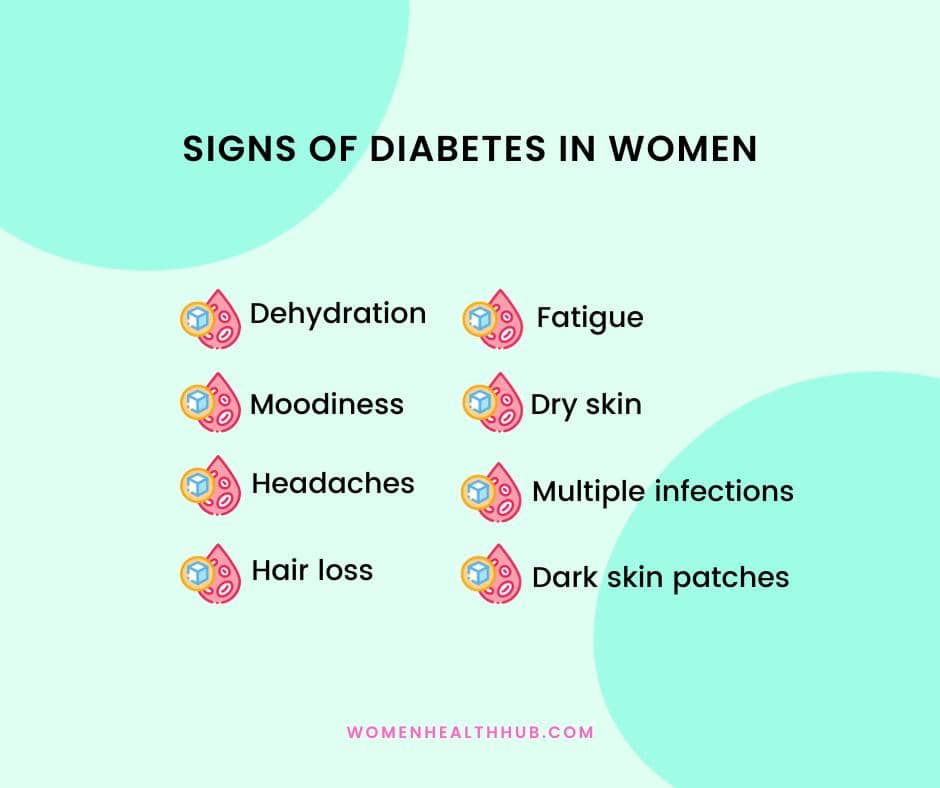
1. You Need to Pee Frequently
One of the early symptoms of high blood sugar type 2 is an increased urge to pee.
When your kidneys notice a sugar surge, they begin overworking to filter and absorb the excess blood glucose. Because of the increased kidney function, you’ll feel thirsty, drink water more, and visit the bathroom frequently.
If this problem messes with your sleep schedule – i.e. disturbs your sleep at night – you might want to seek a professional’s opinion.
2. You Feel Dehydrated
As mentioned above, rapid kidney function & frequent urination will make you thirsty and you’ll need to drink water more often.
This warning symptom of diabetes could be confusing and you could miss it, especially during summer or in pregnancy. Summer dehydration is somewhat similar.
So notice the times when you feel really thirsty. Is it only when you go out? How much water are you drinking daily?
If the hot climate isn’t the reason, extreme thirst could be among the early signs of high blood sugar in diabetics.

3. You’ve Become Moody
Sudden mood swings are also symptoms of high glucose in females. You might find yourself easily irritated and angry.
That’s because high blood sugar affects hormone balance. Unstable hormones cause emotional exhaustion. Severe stress, anxiety, and depression are alarming symptoms of high sugar levels.
4. You Feel Too Tired For No Reason
Many women with diabetes also experience extreme lethargy. You might feel exhausted after performing simple chores such as making tea or cleaning your room.
If you have a good night’s sleep of at least 7 to 8 hours and still seem tired, it might be one of the early physical signs of high blood sugar.
5. You’re Suddenly Losing Weight
Fluctuating weight is also a shocking symptom of diabetes in women that’s often ignored.
Low levels of insulin affect sugar absorption and energy generation. So your body finds new ways to replace glucose. The easiest way is to burn excess fat and use it to generate energy, causing sudden weight loss.
If you’ve lost up to 5% or more of your body weight within a short period, it could be a sign of too high blood sugar levels.
Read More: 6 Best Budget Blood Glucose Monitors
6. You Feel Hungry All The Time
If you notice any significant changes in your eating habits, it might be one of the symptoms of elevated blood sugar levels that need your attention.
Hormone imbalance & the mental distress caused by hyper- or hypoglycemia can also lead to severe hunger pangs.
You might experience sudden urges to snack on your favorite junk foods, typically at night, or when you’re stressed out. Besides, when your body burns excess fat, you’ll naturally feel hungry more often.
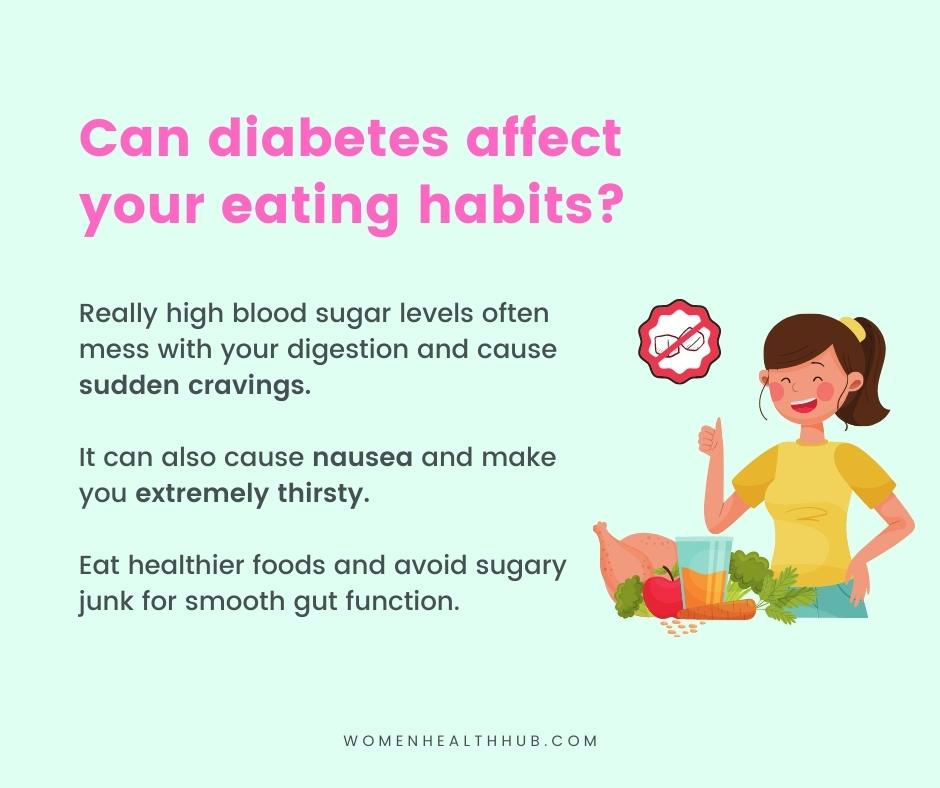
If you don’t eat nutritious foods to regulate blood sugar, there’s a chance of increased weight and obesity. It further raises the risk of diabetic health complications.
In short, diabetes is directly linked to your diet. The healthier you eat, the easier it is to manage the sugar levels.
Read More: Best and Worst Vegetables for Diabetics
7. Your Arms or Legs Feel Numb
Tingly arms and legs are also early signs of high blood sugar levels in elderly women. This condition is medically known as diabetic neuropathy.
Long-term high sugar in the bloodstream can damage nerve function and disturb the signals sent from your brain to your hands or feet. This may lead to a tingly feeling in these regions.
Another reason for numbness in the arms or legs could be poor blood circulation.
Over time, untreated symptoms of diabetes can destroy vessels that carry blood to the organs. It often develops plaque, leading to inadequate circulation and numb limbs.
Frequent numbness in limbs is one of the first warning symptoms of very high blood sugar levels in women. Visit a doctor immediately to get assessed.
Read More: Best-rated Glucometers for Testing Sugar at Home
8. You’ve Blurry Vision
Blurry vision is yet another symptom of high blood glucose in diabetics.
Diabetes type 1 and type 2 damage the nerves in your eyes and cause vision impairment. In severe cases, diabetes can even lead to glaucoma or blindness.
If you’ve otherwise normal sight, blurry vision could be one of the signs of high glucose in diabetics.

9. You Feel Nauseated
Nausea is also quite common in women with high blood sugar symptoms. If you’re experiencing nausea for no apparent reason, it could be because of digestive problems caused by diabetes.
10. You’ve Recurrent Headaches
Moderate to severe headaches or morning dizziness might occur as early signs of diabetes in young females.
When you wake up, your body may have too high or too low sugar, which can result in searing headaches.
Additionally, some women experience migraines because of persistently high glucose. If you notice headaches in the morning that won’t go away, I suggest getting your sugar levels checked.
Read More: 24 Inspirational Quotes About Living with Diabetes
11. You’ve Itchy or Dry Skin
Because of dehydration and poor circulation, diabetics also develop itchiness in the hands, feet, genitals, butt, and even mouth corners. Controlling your blood sugar levels timely can help reduce this problem.
12. You’ve Dark Skin Patches
Dark velvety skin patches in certain body parts are symptoms of prediabetes — a condition that indicates early onset of diabetes. Prediabetics are often at risk of developing type 2 diabetes later on.
In some women, symptoms of too high blood sugar can develop diabetic dermopathy. This condition causes circular, scaly, red, black, or brown patches on the feet. They are easily visible and usually at the front of the feet.
If you notice any visible dark spots on the neck, legs, groin, underarms, or elsewhere, it may be one of the symptoms of high blood sugar type 2.
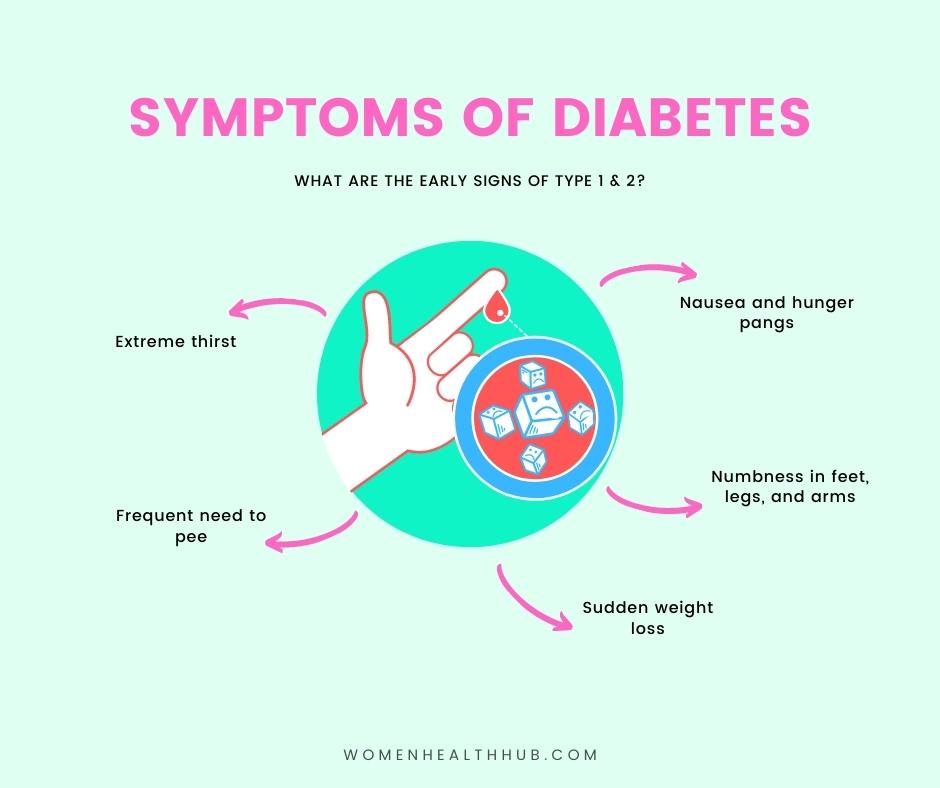
13. You’ve Had Many Infections in A Short Period
You might also become increasingly prone to infections as high blood sugar weakens the immune system. Spikes in sugar lead to hyperglycemia which makes your organs susceptible to bacterial and viral infections.
If you’ve noticed frequent infections within a short time, it may be because of high glucose levels.
14. You’ve Started Losing Hair
Diabetic hairfall is a commonly ignored symptom of high blood sugar levels. We lose a lot of hair daily. But diabetes in women may cause significant hair loss — I’m talking bunches on the pillow and brushes filled with hair!
In case of rapid hair loss, get your blood sugar levels checked immediately as it could be among the signs of high glucose levels.
Read more: Useful Tips to Treat Diabetic Hairfall Naturally
How Can You Lower Blood Sugar Levels Quickly?
My first recommendation is to visit a doctor if you notice any warning symptoms of diabetes. You’ll need immediate medication to improve insulin functioning.
Next, your doctor might advise you to change your lifestyle. Managing symptoms by altering your lifestyle is the easiest way to regulate sugar & reverse diabetes in the long run.
Here are some tips to manage early signs of very high blood sugar:
- Tip 1:
Start eating healthy. Cut down on high-carb foods as they might increase your weight. Be sensible with red meat intake. Also avoid sugary stuff such as carbonated drinks, sweetened cereals, and dried foods.
- Tip 2:
Exercise daily. This will help you stay fit, avoid weight gain, & naturally regulate blood sugar levels.
- Tip 3:
Avoid binge-drinking. Alcohol can be a fatal enemy for diabetics if you don’t practice caution.
- Tip 4:
Monitor your blood glucose often. Make it a habit to check your blood sugar levels daily. Type 2 diabetics should check their sugar at least once a day.
- Tip 5:
Take your medicine on time. Failing to take insulin on time can spike your glucose to dangerous levels and you might end up in the ER.
- Tip 6:
Quit smoking. Nicotine messes with the effect of insulin and makes it difficult to manage diabetic symptoms.
The Bottomline
If you’ve experienced any such symptoms, what was your experience like? Also, did you notice any other unique early signs of diabetes or prediabetes before your diagnosis? Share with me in the comments below.
I hope you found this article useful! If you did, don’t forget to share it with your friends and fam.
References:
- https://catalyst.phrma.org/costs-and-consequences-of-not-treating-diabetes
- https://www.webmd.com/diabetes/guide/understanding-diabetes-symptoms
- https://www.diabetes.org/diabetes/type-1/symptoms
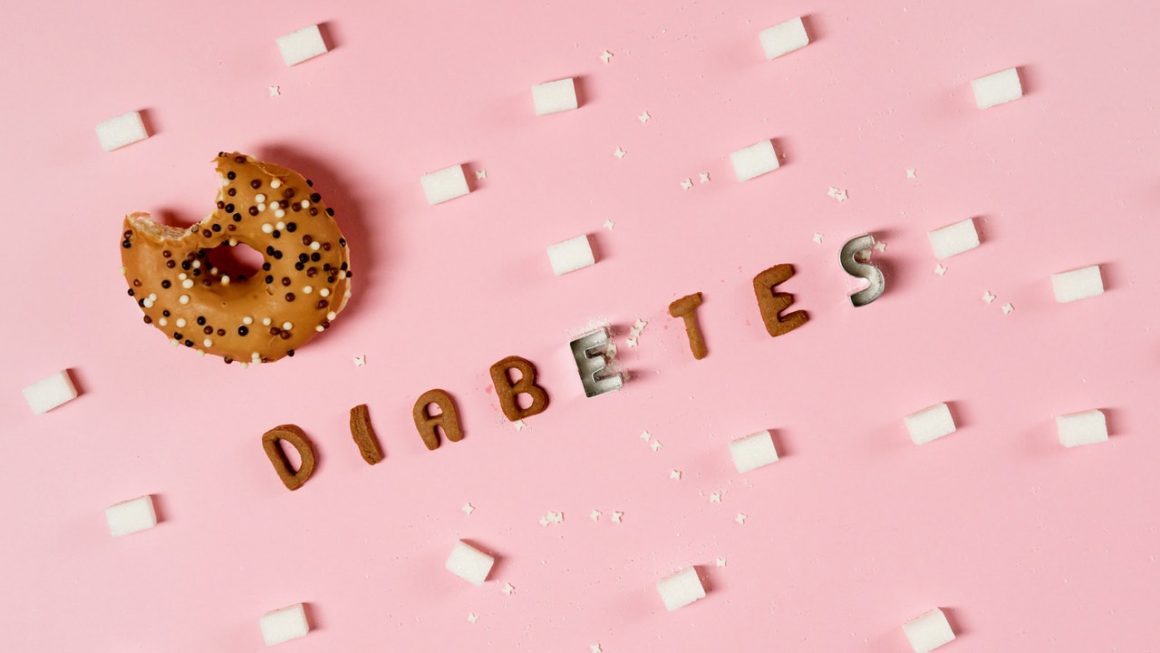




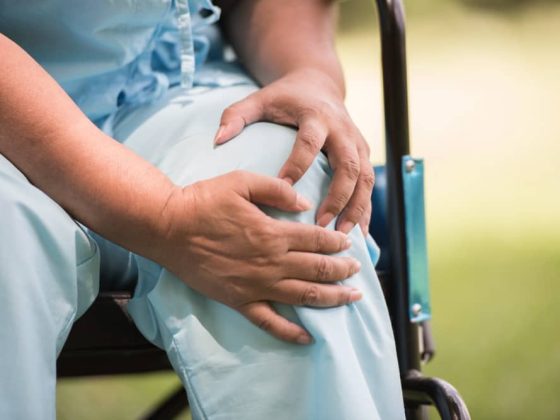




2 comments
Very good information!! Thank you!
Thanks so much, Linda!